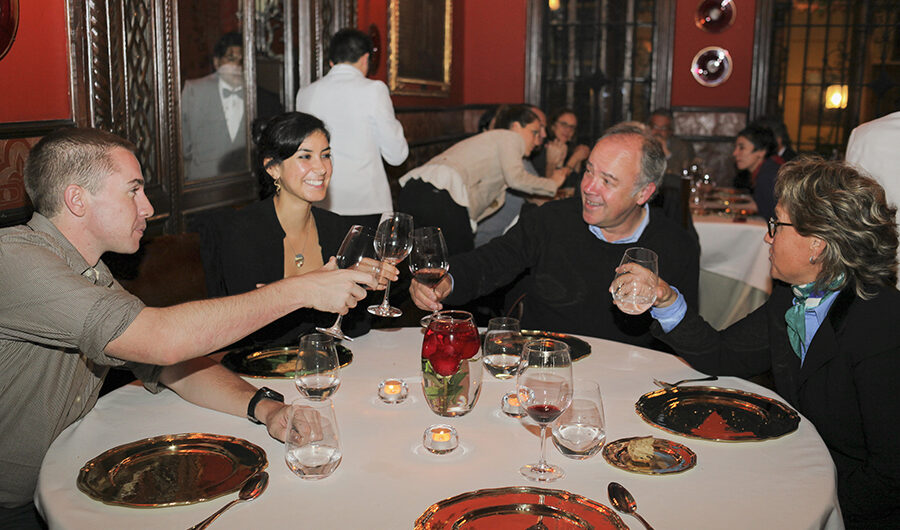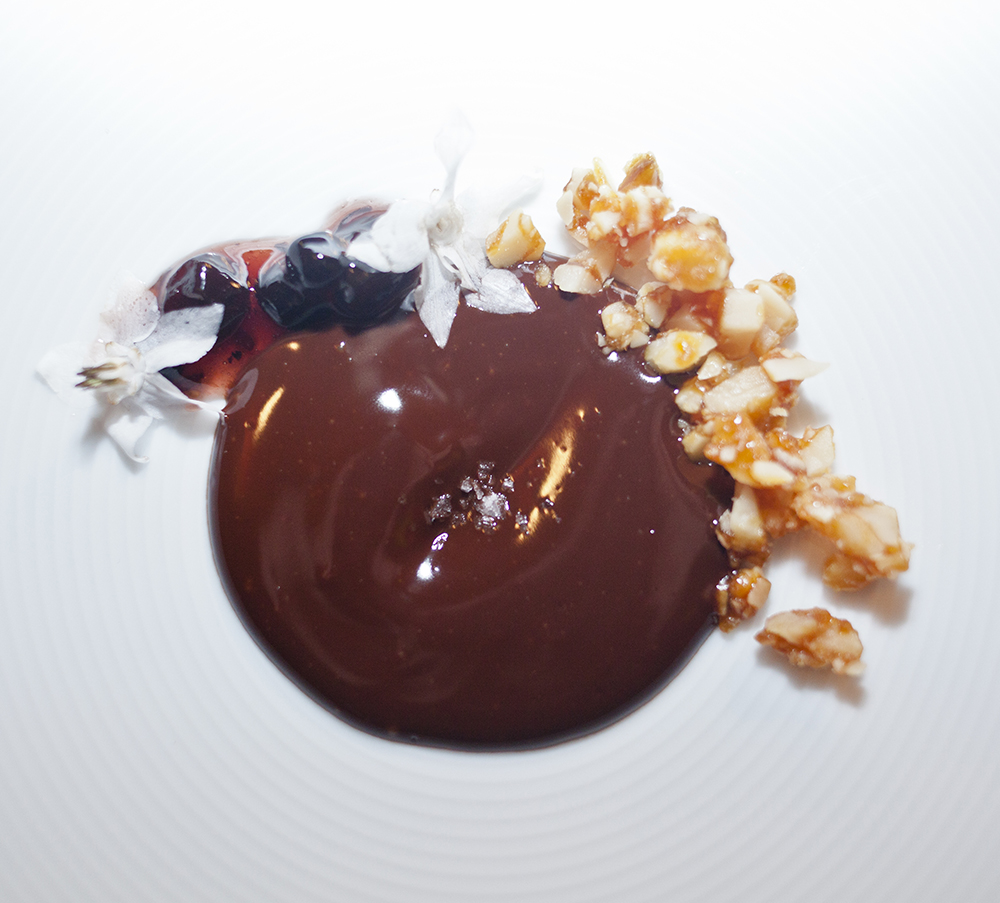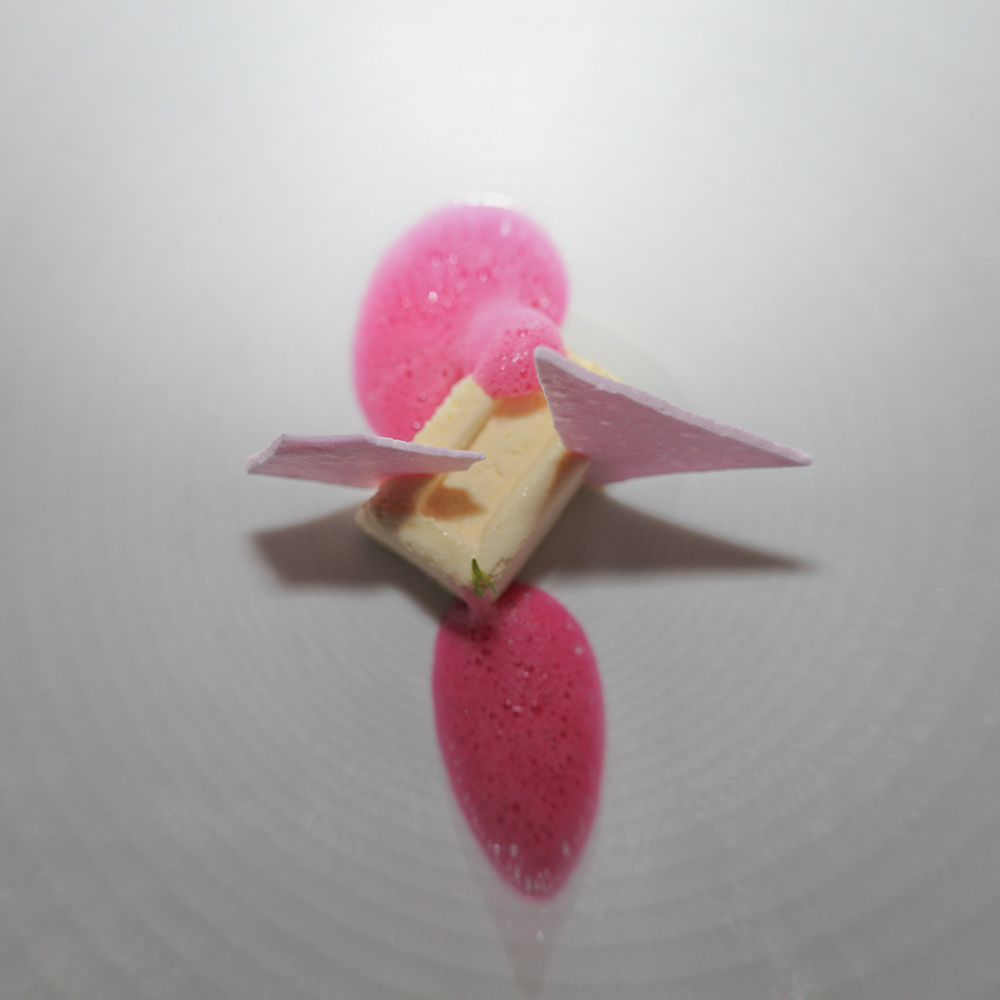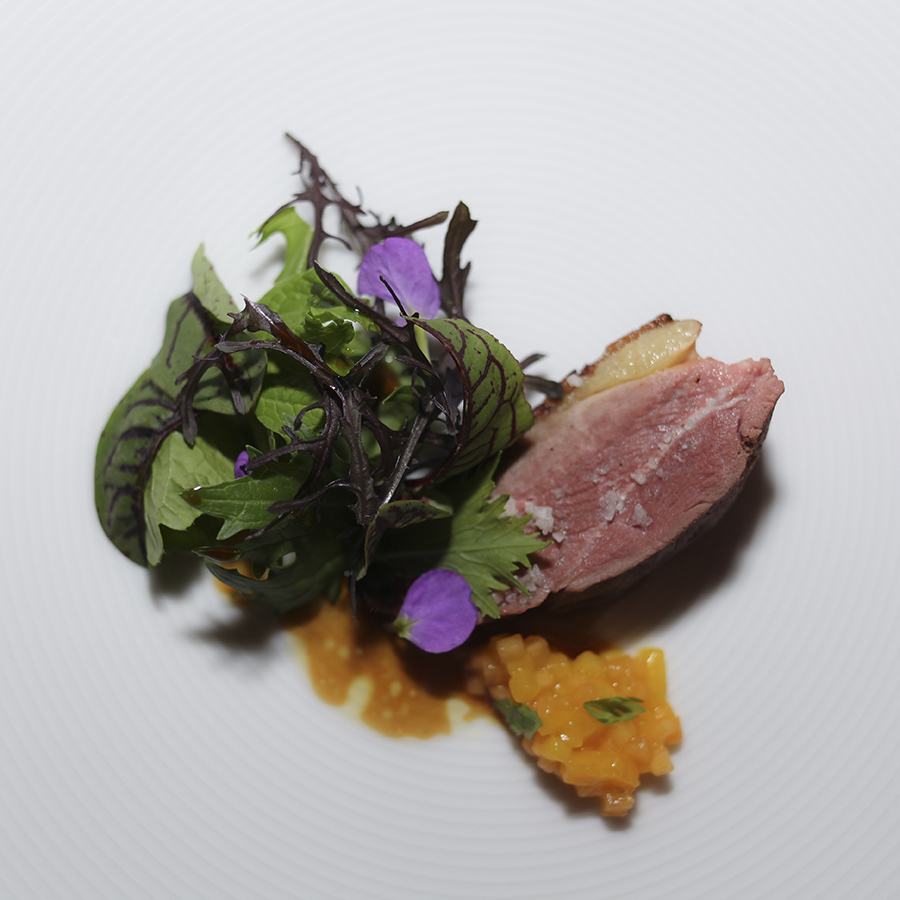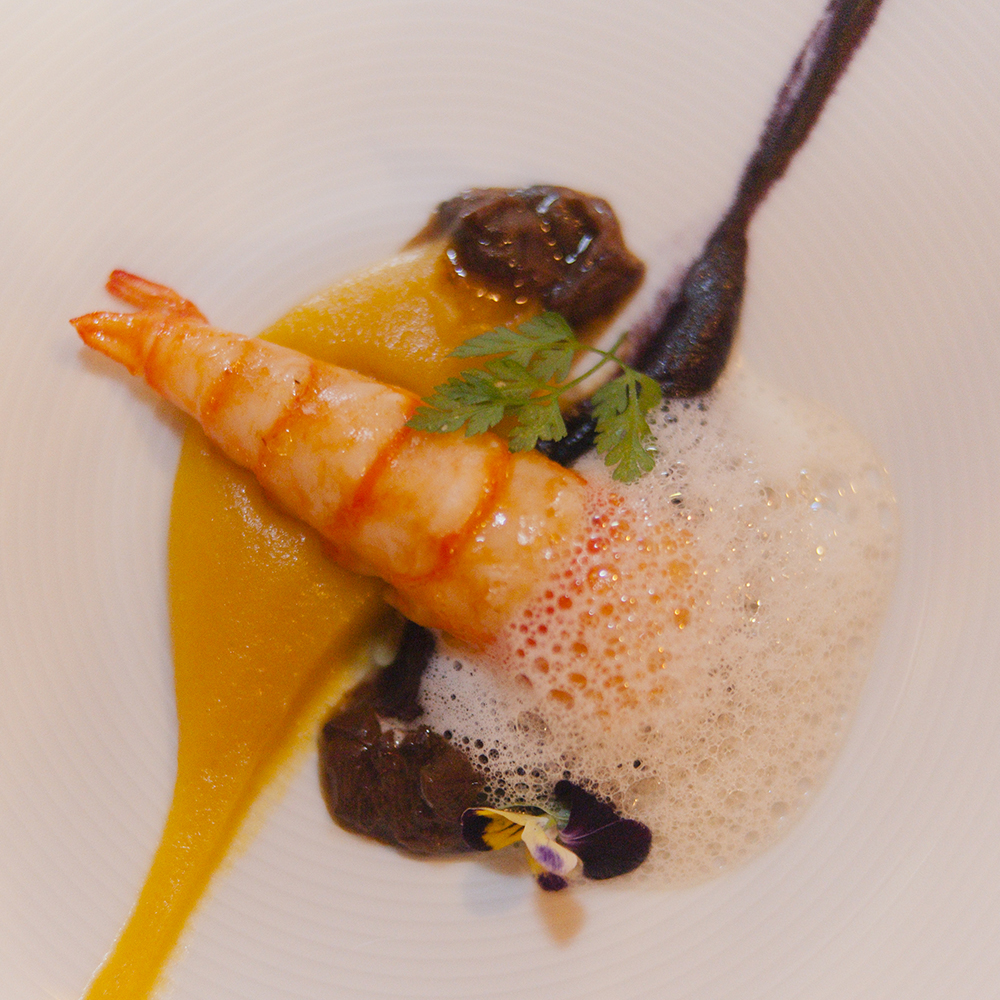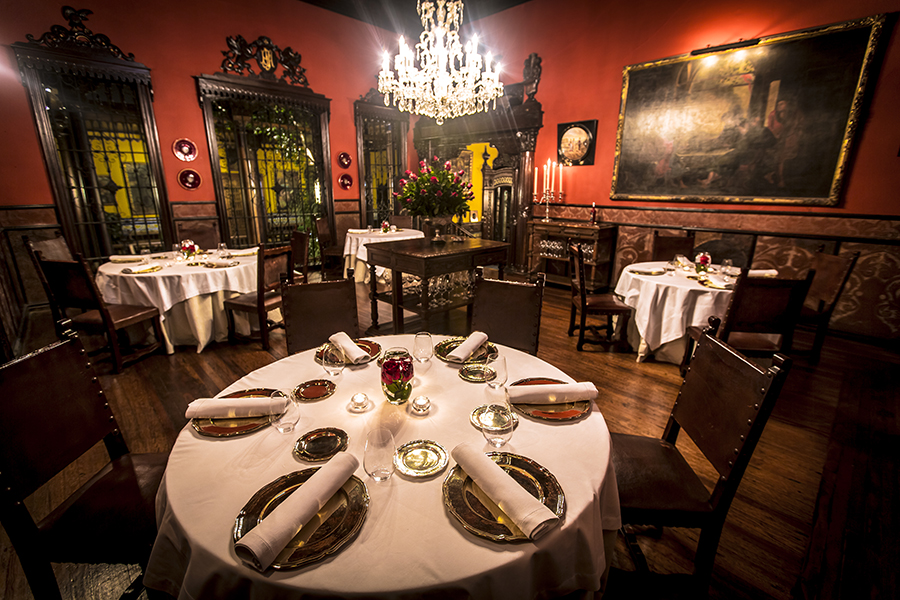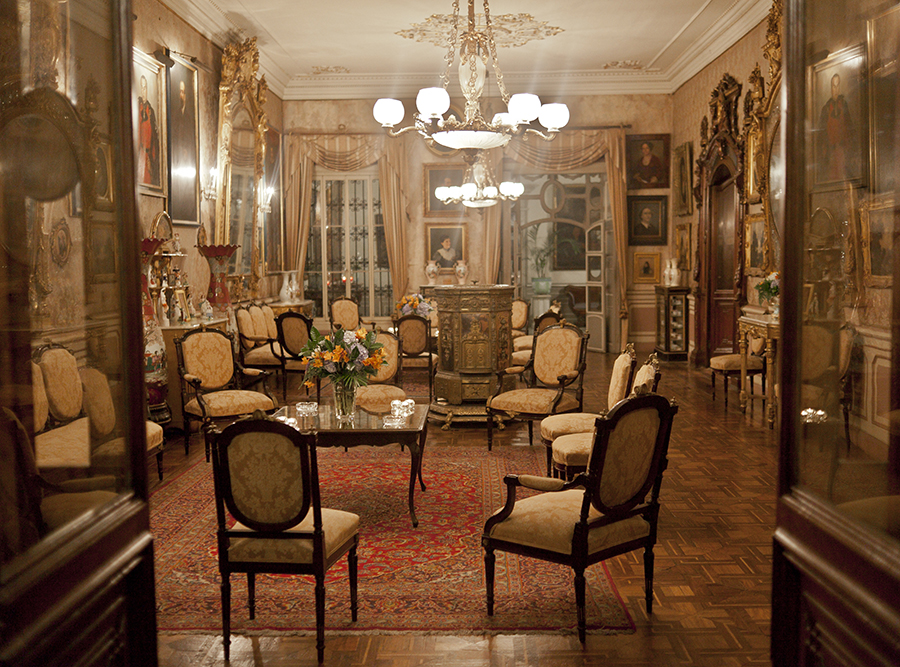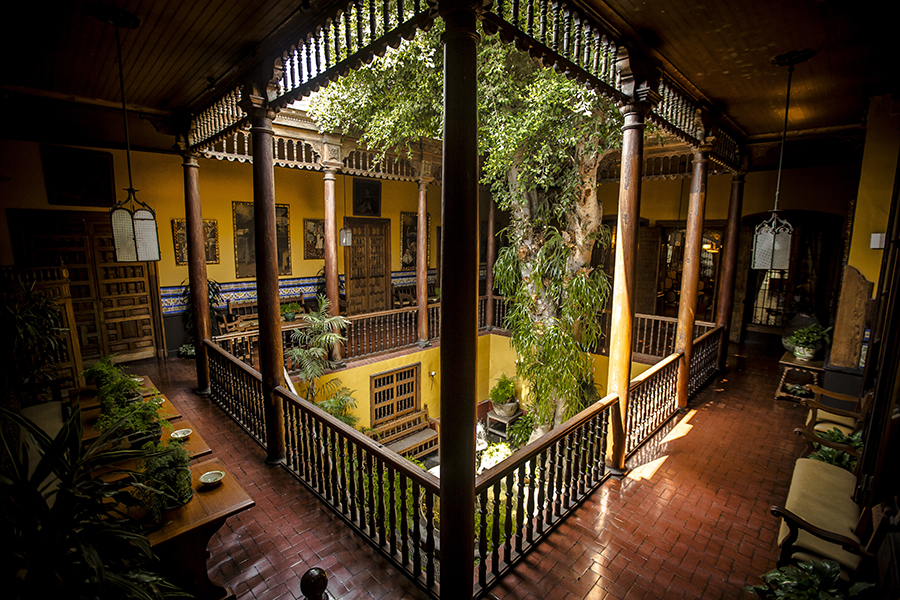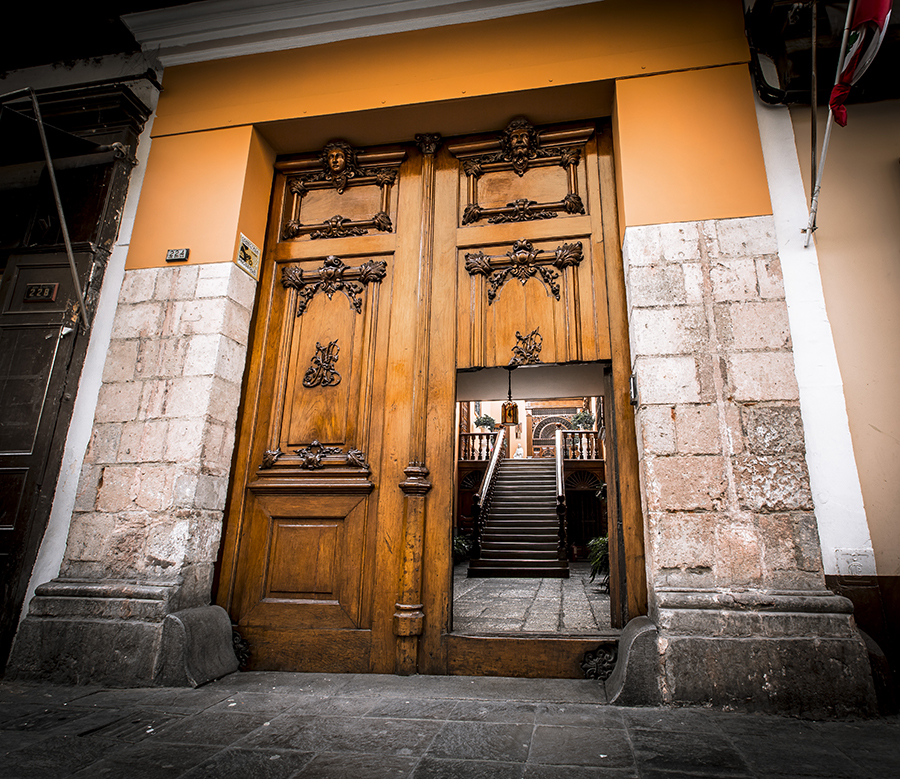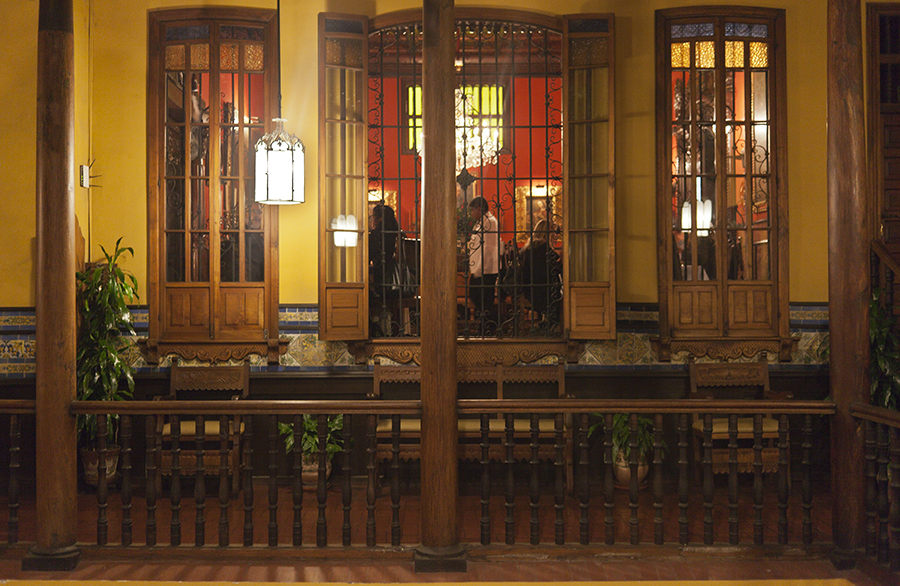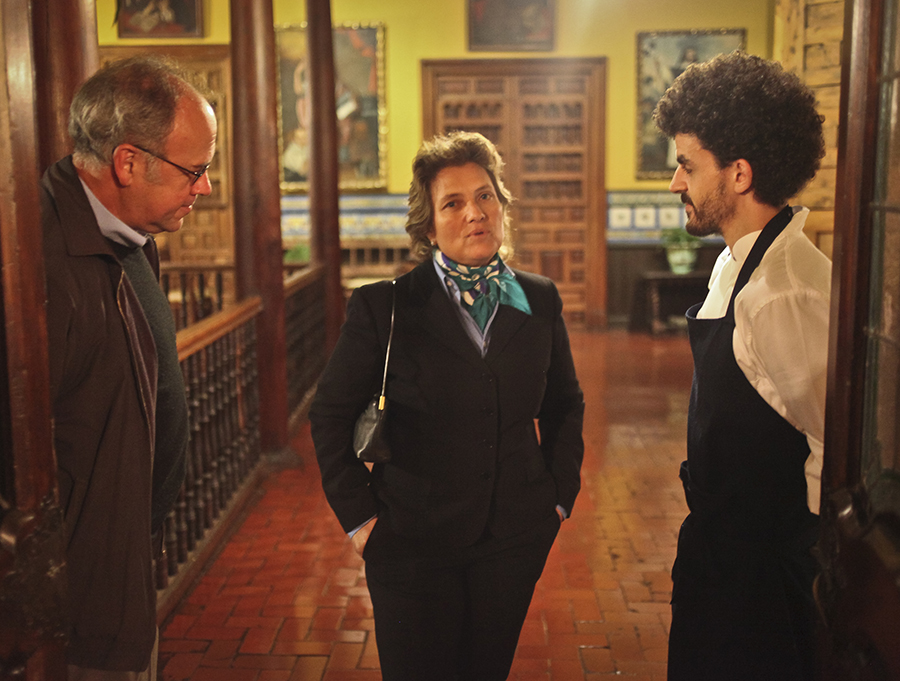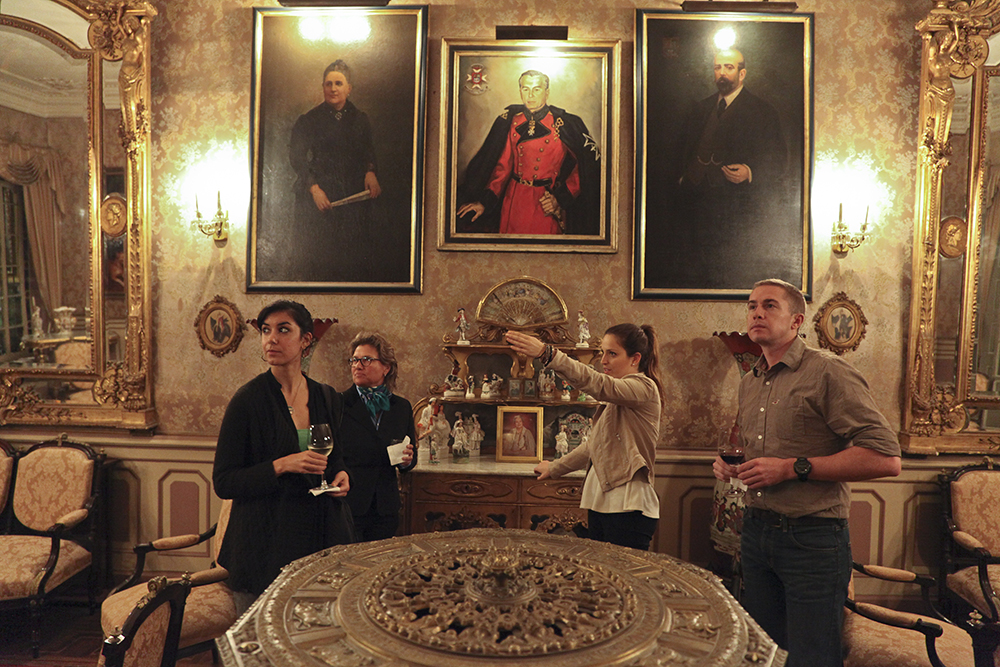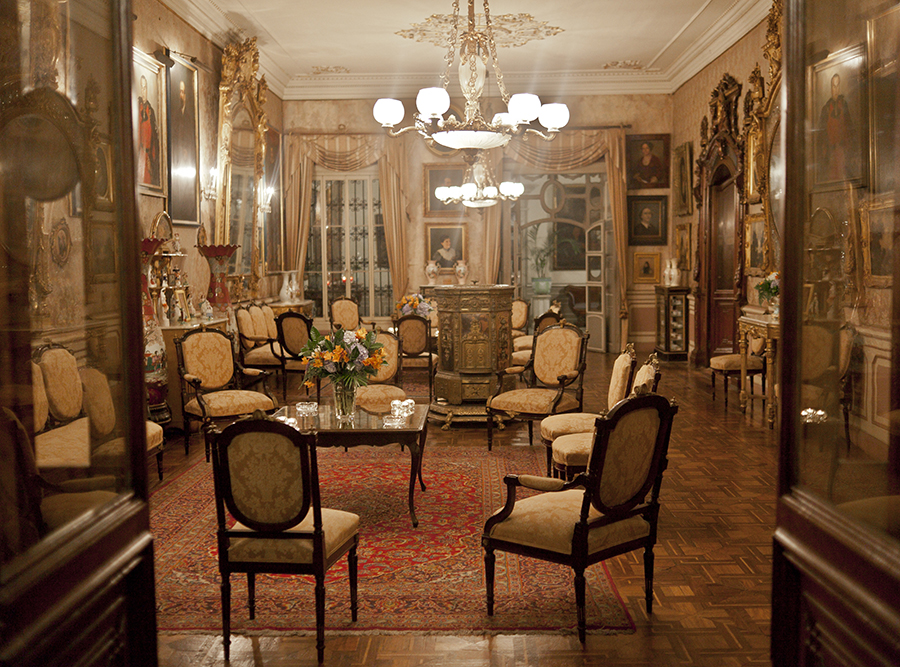It was on a Thursday evening that my colleagues Mark, Maria Julia and I found ourselves walking along the Jirón de la Unión in the center of Lima, looking for Casa Aliaga: the Aracari team had been invited to this historic landmark by Jerónimo de Aliaga, a chef who has recently begun to offer a tasting menu here. After accidentally passing the house, we doubled back and saw a man in a suit holding the beautifully carved wooden door open for us to enter.
The stairs of the reception hall were lined with candles, and a young woman waited above on the landing to give us a tour of the Aliaga house, the oldest home in Lima that has been lived in by the same family for seventeen generations, beginning with another Jerónimo de Aliaga, one of the thirteen men who arrived with Francisco Pizarro in the sixteenth century. The house was built upon a huaca, which is hidden now on the ground floor. Only a part of the Aliaga mansion is open for viewing, and the Aliaga family lives in another part. Our hostess showed us a narrow hall that once led to the servants’ quarters as she explained that in the past the home was, at times, occupied by up to a hundred people, servants included.
In the first room off of the reception hall, our hostess showed us the sword that Jerónimo de Aliaga used during the conquest, encased in glass in one corner, and in another corner, the framed document signed by Diego de Aliaga for the independence of Peru from Spain in the nineteenth century. The room retained its beautiful, original tiles that covered the floor and part of the wall, illuminated by a grand chandelier of glass. We crossed the hall and entered a long, narrow salon that had been remodeled, taking inspiration from Louis XVI’s Versaille, with ornate wallpaper, gold, elaborate frames for large mirrors and portraits of the Aliagas decorating the walls. Moving further into the house, we entered the ficus patio, an open courtyard, where a ficus tree stretches up through the room and out of the open ceiling. From below, the sound of water could be heard trickling from a small pond, lending the room a feeling of serenity. Beside this courtyard is the chapel. Incredibly, the chapel retains the original ceiling and dome built in 1540, which has withstood fires and earthquakes and may be the oldest ceiling in Peru, possibly South America. After this tour, we entered the dining room that has dark red walls and impressed leather running along the bottom half, lit by a chandelier glowing softly in the center of the room. There were four dining tables set with golden plates and a rose submerged in a glass vase at the center of each.
A Gourmet Experience
John Alfredo Benavides, one of Aracari’s specialists on the history of Lima, joined us, and we sat to begin our meal. The table was draped with a white tablecloth. The servers immediately brought a tray of warm bread and set olive oil on the table for dipping. Then the meal began with five savory dishes and two desserts for us to taste. Jerónimo explained each one and the ingredients as they were presented beginning with:
Conchitas con tartara de maca, maca crocante, terrina de palta y granito de leche de tigre
Fresh scallops with maca tartar sauce and crispy maca (maca is a popular tuber in Peru), avocado terrine and ice crystals of “tiger’s milk” (tiger’s milk is the name for the lemon juice byproduct of ceviche, flavored by the fish and salt). It was a modern take on traditional ceviche, and the cold crystals of tiger’s milk on the scallops was refreshing and different. The variety of textures with the crunchy maca and the avocado was, simply stated, delicious. Next, we had:
Arroz de zapallo loche, fonduta de queso de cabra ahumado y velo de huacatay
Rice with pumpkin, smoked goat cheese fonduta with a veil of huacatay, which is a marigold plant (called Southern Cone Marigold or black mint in English). It had a subtle sweetness and was creamy but light. The huacatay buds made it visually appealing and added a layer of texture and complex taste. Another change of silverware and plates brought:
Camarón con puré de mashua amarilla y morada, ragu de hongo de marayhuaca y espuma de bisque de camarón
Shrimp laid over a puré of yellow and purple mashua (a sweet tuber of Peru), sauce of mushrooms from Marayhuacay (a region of Peru), and whipped shrimp bisque espuma (foam). As a shrimp lover, this was a treat for me. I’d never tried mashua and found myself pleasantly surprised by the subtle sweetness, which was balanced nicely by the earthy flavor of the mushroom sauce. After the shrimp, the servers brought:
Magret de pato, ensalada de kiona, sorrel rojo, mostaza verde y roja con tartare de mango y papaya verde
Magret of duck, a salad of ginger, red sorrel, green and red mustard with a mango and green papaya tartar sauce. The tender duck with the sharp, bitter flavor of the mustard and sorrel was complemented by the sweet mango and green papaya, which mingled beautifully on the palate. The last savory dish was:
Cordero con puré de pallar y quinua crocante
Lamb with a purée of pallar (a Peruvian white bean) topped with crunchy quinoa. The smell alone of this dish was enough to satisfy—of course eating it was even better. Again, the different textures, the crunchy quinoa with the smooth purée of pallar and the succulent lamb was excellent. After a pause for wine refills and to allow us time to digest the savory dishes, the desserts were presented. The first was:
Semifredo de maracuya, crocante de ayrampo y aire de ayrampo
Semifreddo (a semi-frozen custard) of passionfruit with a wafer of ayrampo (an Andean fruit) and air of ayrampo. This was also my first time trying a semifreddo, and the lightness of it, to me, made it a perfect dessert to satisfy the desire for something sweet without being heavy and overly indulgent. The second dessert was:
Ganache de chocolate orgánico al 70% castañas acarameladas y saúco
Ganache of organic chocolate of 70% cacao with caramelized chestnuts and elderberry. For me, no meal is complete without a taste of rich, dark chocolate, so I was more than content to find this dish before me. I trust that this needs little description other than, we all licked our spoons clean.
We were all pleased by the sophistication of the presentation of the dishes, as well as the taste. The servers offered us espresso or tea, and once we finished, we thanked them all and rose from the table. We took a final look around Casa Aliaga, asking any lingering questions about the rooms and the paintings that lined the walls before descending the stairs and exiting to the bustle of Jirón de la Unión.
The experience gave me new insight into Lima’s history and into contemporary Peruvian cuisine in the same sitting, and though it was only a taste of both, I would consider it an extremely satisfying way for Aracari guests to spend an evening in Lima.
Photos courtesy of Pedro Chincoa

